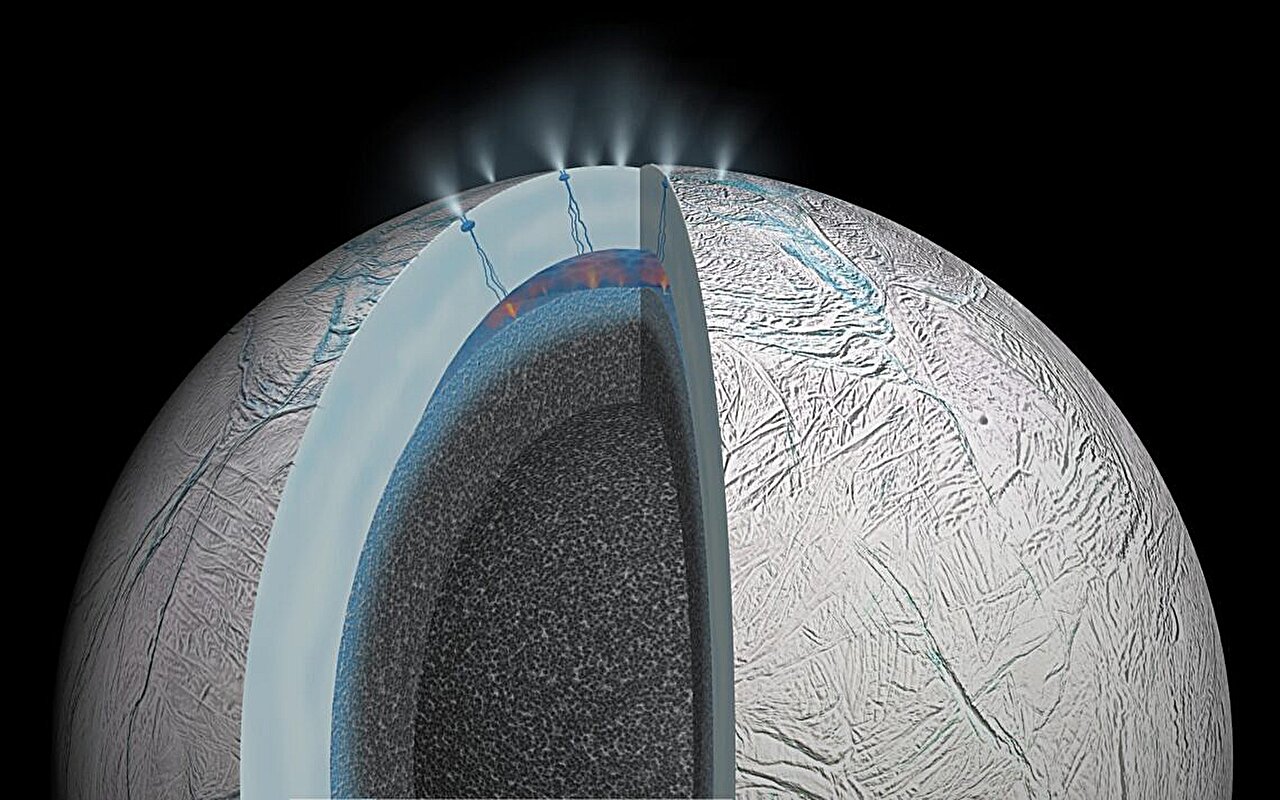Icy Moons: Prime Targets for Detecting Extraterrestrial Life
A recent study led by researchers from the University of Washington and Freie Universität Berlin reveals that Saturn’s moon Enceladus and Jupiter’s moon Europa are key contenders in the search for extraterrestrial life. The study demonstrates that forthcoming space missions may detect signs of life in individual ice grains ejected from these moons’ subsurface oceans. With the right instruments, scientists could uncover traces of cellular material even in the smallest ice particles, raising hopes for the discovery of life beyond Earth.
According to lead researcher Fabian Klenner, this marks the first time it has been proven that a spacecraft could detect tiny amounts of cellular material in space. Published in Science Advances, the findings highlight the potential of upcoming missions like NASA’s Europa Clipper to identify life forms similar to those on Earth, potentially residing within the hidden oceans of icy moons. These breakthroughs underscore the importance of exploring these moons with advanced detection technology.
How Scientists Plan to Detect Life on Icy Moons
In preparation for the Europa Clipper mission, scientists developed an experimental method to replicate the conditions that spacecraft will face when collecting ice particles from space. To simulate the ice grains that will be captured from Europa’s plumes, researchers used a beam of liquid water in a vacuum, which broke into droplets. A laser was then used to excite these droplets, and the results were analyzed to determine whether cellular material could be detected.
The team used Sphingopyxis alaskensis, a bacterium commonly found in Alaskan waters, to mimic potential life forms that could exist in the subsurface oceans of icy moons. The study concluded that even a single ice grain could carry enough material for the advanced instruments on Europa Clipper to identify biological signatures. This method of focusing on individual ice grains may greatly enhance the chances of detecting alien life.
These findings pave the way for more precise missions, where analyzing just a fraction of ice grains could yield answers to one of humanity’s greatest mysteries: are we alone in the universe?
